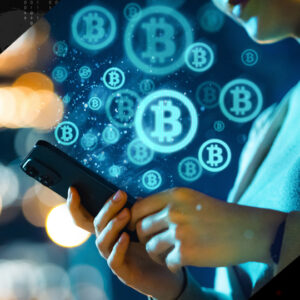The COVID-19 pandemic, which took the world by surprise, has accelerated digitalization in all areas of economic and social life. Trade has not been immune to this process. Although aggregate data are not yet available, in the first few months of the year, there has already been an unprecedented expansion of eCommerce in various Latin American economies, with sales of essential goods being the biggest beneficiaries. Jason Simon, a FinTech and eCommerce expert, explains how eCommerce in Latin America has received a drastic change thanks to digital payments and different FinTechs today.
The economic and health crisis exposed many of the structural problems that Latin America faces in order to consolidate the growth of eCommerce. Informality, financial exclusion, and low digitization of SMEs represent some of the major challenges. “In particular, the need to spread the use of digital means of payment in contexts of pre-emptive isolation has gained a central place in the regional agenda,” Simon asserts. “Even more so, considering that nearly 207 million Latin Americans still do not have access to a bank account, a condition historically essential to make use of these payments.”
In this context, the digital revolution in finance is opening up new opportunities. FinTech is digitizing financial services and providing new financial tools that give access to opportunities to a huge, historically underserved population. The technology revolution is, in turn, reinventing the business of finance in general, leading to the emergence of new players and business models in the traditional banking sector.
“Banks are trying to transform themselves by seeking to merge their physical assets with digital ones by finding new ways to serve the population through the offer of electronic banking platforms (home banking) and mobile banking (mobile banking). Also, finding new organizational structures such as Digital Banking (entities without branches, offering virtual services),” Simon explains.
At the same time, there is a growing use of new disruptive technologies that enable the emergence of new banking business models -based on the ‘FinTech’ philosophy-, which is expressed in the form of Neobanks and Challenger Banks, or collaborative and/or open banking models such as Banking as a Service (BaaS) or Banking as a Platform (BaaP).
The role of “BigTech,” technological giants represented in the West by the acronym GAFAs (Google, Amazon, Facebook, and Apple) and in the East by BAT (Baidu, Alibaba, and Tencent), should be highlighted. These are technology companies that start out providing services of a different nature (non-financial) and then consolidate their position by offering financial services through the use of non-banking licenses or by building alliances with financial entities to enter into more regulated and supervised businesses hand in hand with a partner, prepared and with extensive experience in regulatory compliance in different geographies.
Business models such as “super apps” are also highlighted, which integrate financial services as a spearhead to offer in a single place everything the user needs (eCommerce through social networks, marketplace platforms, restaurant reservations, ordering a cab, home food delivery, payment of services, etc.).
Therefore, the financial services market is currently an interesting space in which traditional players coexist with technology companies in different forms. Some FinTech companies compete directly with banks, others partner with them, and others supply them with goods and services. At the technological level, some specific technologies are identified for their potential to revolutionize the supply of digital payment media, highlighting, APIs; Big Data; Biometrics; Cloud Computing; Contactless, including the use of QRs; digital identities distributed registration technologies (Blockchain) and the Internet of Things.
Undoubtedly, the leading access channel in this transformation is the cell phone. Mobile payment is gaining wide acceptance globally but is more prominent in emerging countries.
A survey conducted ten years ago shows that, globally, by 2019, 34% of consumers paid for their purchases using mobile payment in-store, up from 24% the previous year. In Asia, the growth is much more pronounced (for example, in Vietnam, the percentage of consumers using such in-store services increased by 24 percentage points to 61% in a single year). In the Middle East, the percentage grew by 20 percentage points to 45%.
This transformation in financial services and providers brings with it a never-before-seen opportunity for eCommerce. Through digital and financial inclusion of the historically underserved population, or new services or more affordable providers for those underserved customers, the door to eCommerce opens prominently for consumers and SMEs in the region.




 Bitcoin
Bitcoin  Ethereum
Ethereum  Tether
Tether  XRP
XRP  Solana
Solana  USDC
USDC  TRON
TRON  Dogecoin
Dogecoin  Lido Staked Ether
Lido Staked Ether  Cardano
Cardano  Wrapped Bitcoin
Wrapped Bitcoin  Hyperliquid
Hyperliquid  Wrapped stETH
Wrapped stETH  Bitcoin Cash
Bitcoin Cash  Sui
Sui  Chainlink
Chainlink  LEO Token
LEO Token  Avalanche
Avalanche  Stellar
Stellar  USDS
USDS  Toncoin
Toncoin  Shiba Inu
Shiba Inu  WETH
WETH  Litecoin
Litecoin  Wrapped eETH
Wrapped eETH  Hedera
Hedera  WhiteBIT Coin
WhiteBIT Coin  Binance Bridged USDT (BNB Smart Chain)
Binance Bridged USDT (BNB Smart Chain)  Monero
Monero  Polkadot
Polkadot  Bitget Token
Bitget Token  Ethena USDe
Ethena USDe  Coinbase Wrapped BTC
Coinbase Wrapped BTC  Uniswap
Uniswap  Pepe
Pepe  Aave
Aave  Pi Network
Pi Network  Dai
Dai  Ethena Staked USDe
Ethena Staked USDe  Aptos
Aptos  Bittensor
Bittensor  OKB
OKB  BlackRock USD Institutional Digital Liquidity Fund
BlackRock USD Institutional Digital Liquidity Fund  NEAR Protocol
NEAR Protocol  Jito Staked SOL
Jito Staked SOL  Internet Computer
Internet Computer  Ethereum Classic
Ethereum Classic  Cronos
Cronos  Ondo
Ondo